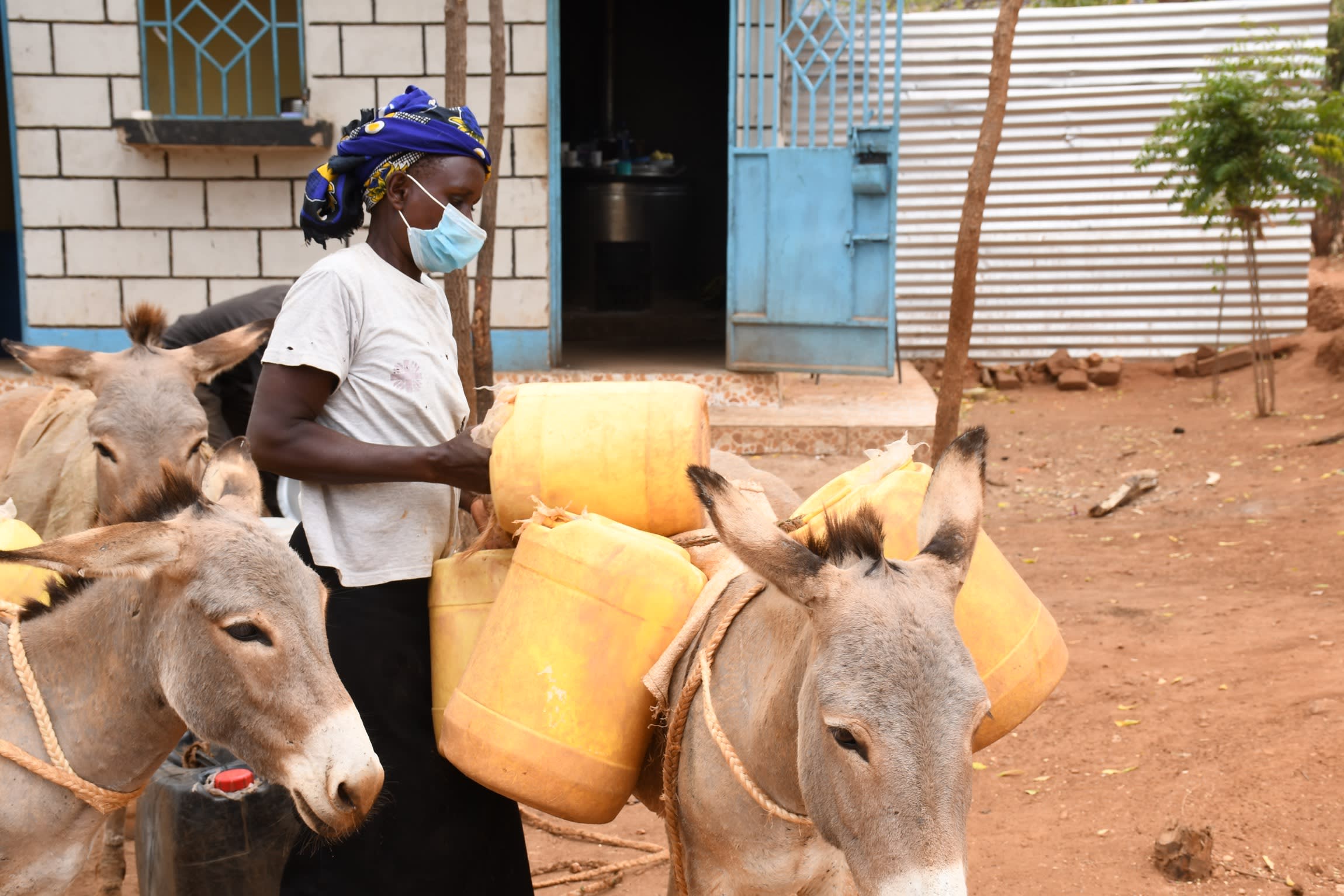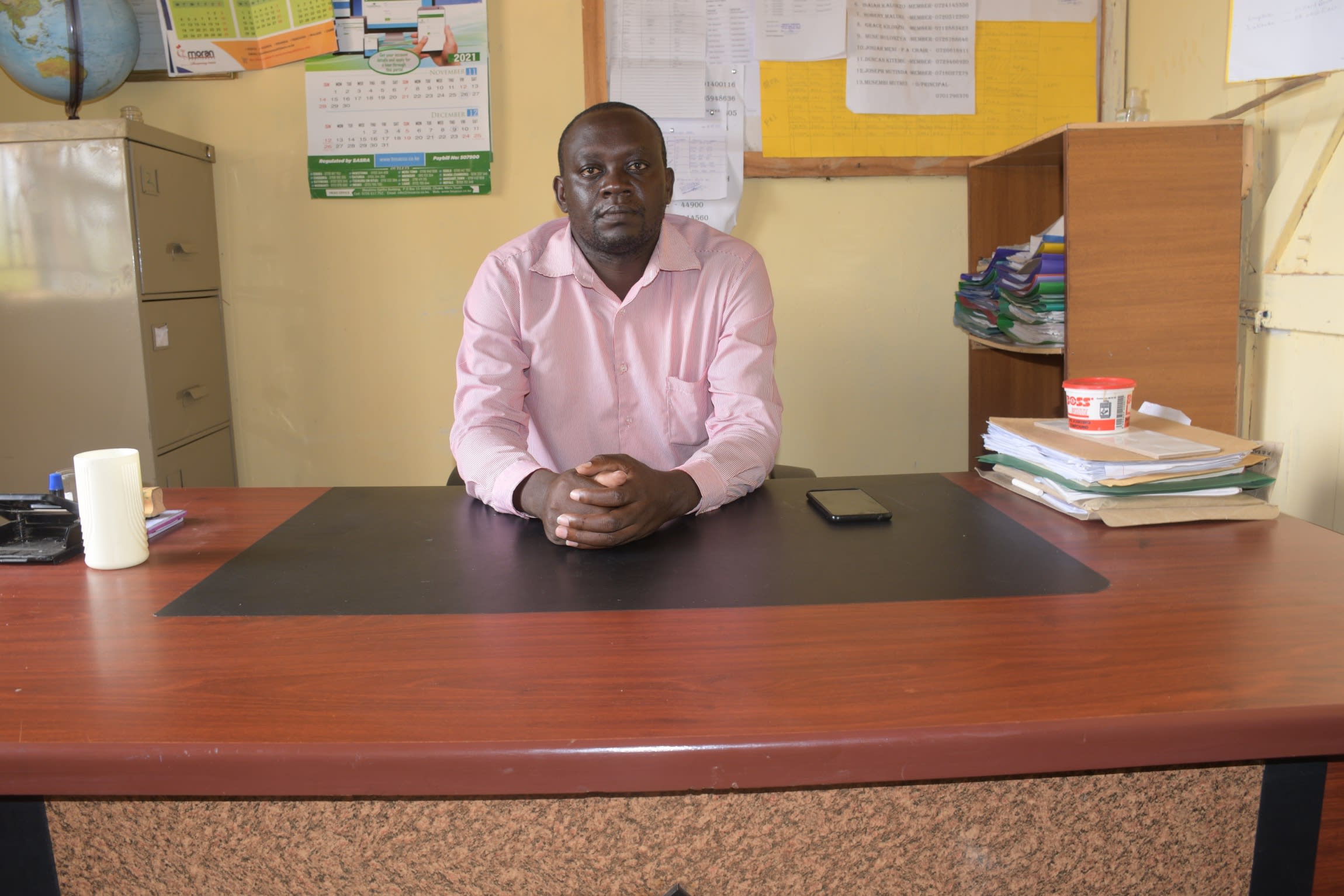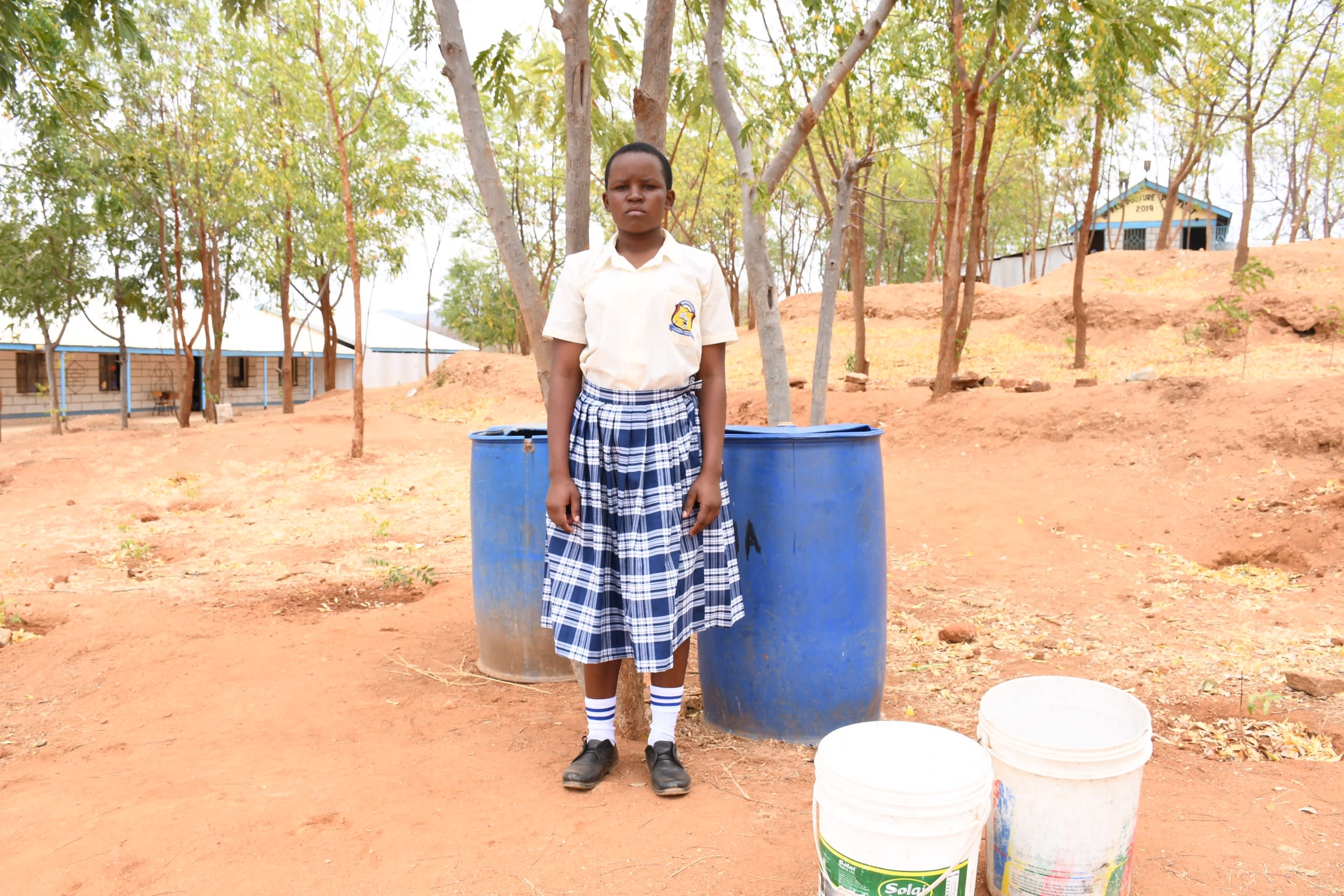Kamathiitu Secondary School, a boarding school, experiences various water scarcity issues that negatively affect the school's 157 students and 14 staff. Students are thirsty, and classrooms and latrines' hygiene and sanitation are lacking because they are rarely cleaned due to water rationing.
During the week, the students' parents collect water from the Kasee River, which is almost two kilometers away, and bring it to the school on donkeys. They get the water from scoopholes in the river, which are surrounded by footpaths for people and animals. Excrement is scattered about, and dust blows contaminants into the water.

Although water is necessary, this water comes with a high cost. It exposes students to water-related infections such as typhoid, amoebas, stomachache, and dysentery, all of which lead to absenteeism.
There are two small rainwater tanks (with a total capacity of 20,000 liters) on the school campus, but they don't hold enough water to sustain the school through the entire dry season.

Deputy Head Teacher Peter Musembi (in the above picture), 42, commented, "My students spend time to [go] fetch water from the river, which reduces their learning time and ultimately [their] academic performance. The available water is also inadequate and cannot meet the needs of the students, which leads to learning discomfort and poor concentration in class. Issues such as absenteeism due to sickness from water-related infections also dismally affect students' academic performance."
On Sundays, students must walk to the river themselves to collect and bring back enough water for their bathing and laundry needs throughout the week. But their Sunday evening study time suffers because they are too exhausted to concentrate by the time they return.
"Walking to the river on Sunday to fetch water is tedious and consumes a lot of time that I would rather spend on studies. The water we fetch is also not enough to conduct personal hygiene and general hygiene and sanitation of the school. I have also contracted stomach upsets in the past after consuming water from the current sources," said Esther M., 15 (pictured below).

Another cost to the school, and ultimately the students' education, is the price of transporting the water by donkey. Administrators spend up to KES 60,000 ($530 USD) per term, yet it is still not enough to fully satisfy the entire school population. They could better use the money spent on collecting water to provide further educational opportunities for students.
The proposed rainwater tank solution will collect enough clean water during the rainy season to sustain it through the dry season, improve the school's hygiene and sanitation, and reduce its current water expenses. Having the additional funds available will allow the school to invest in more productive projects.
Rain Tank
We will build a 104,000-liter rain tank for this school, making the others look tiny in comparison. Because of how rarely it rains in Southeastern Kenya, this tank's large volume is designed to store as much water as possible during the seasonal rains, making more water available through the dry months. This water will benefit the students, teachers, and supplementary staff.
Parents will mobilize the materials needed for construction, including sand, stones, and water. They will also lend their strength and time to help with the construction. We will complement their materials with a skilled artisan to lead the project in addition to providing the tools, lumber, metal, cement, and gutter system.
As soon as the tank has time to cure, it can begin collecting rainwater for the school's use.
Training
We will train students and staff on sanitation, hygiene, and other topics for 1 day. Those in attendance will form a school health club that will promote good hygiene and sanitation practices both at school and at home. They will learn all of the steps to proper handwashing, how to treat water, and how to keep their environment clean. The school will also be taught how to best oversee and maintain their new rain tank and handwashing stations.
Handwashing Stations
A total of 3 handwashing stations will be installed upon the project's completion and before training. These are 1,000-liter plastic tanks fitted with 3 taps each, allowing 9 students to wash their hands at once. The student health club and school management will be responsible for making sure the tanks are filled with water and that a cleaning agent such as soap or ash is always available.

 Rainwater Catchment
Rainwater Catchment
 Rehabilitation Project
Rehabilitation Project
































